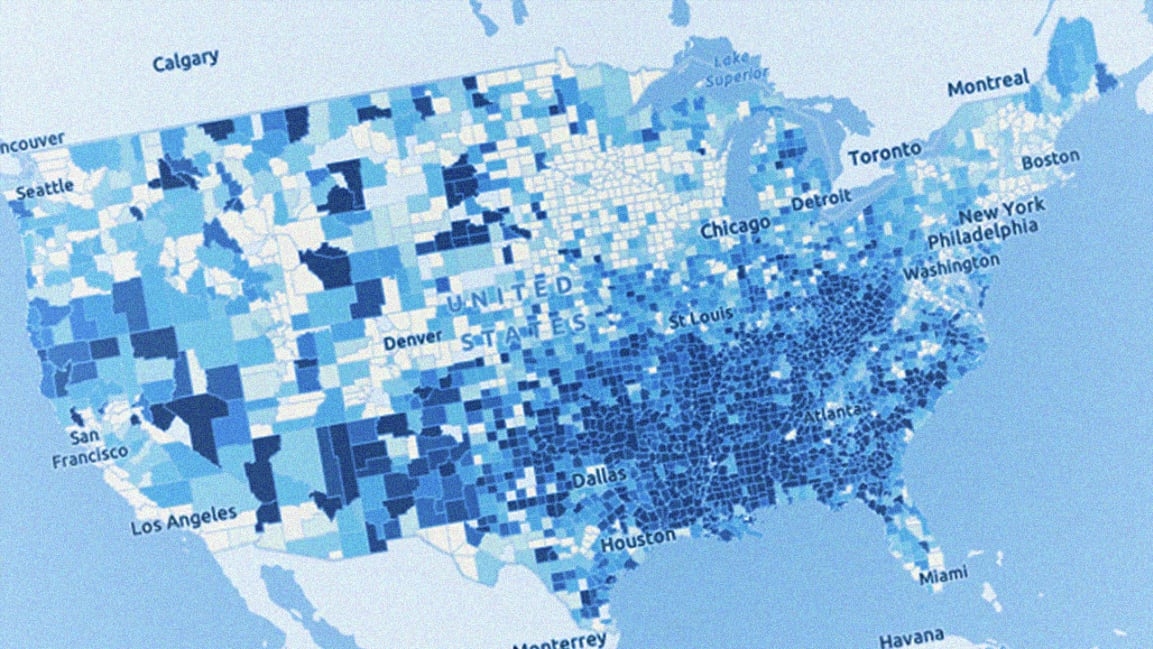This map of mortality rates in America shows the grim details behind life expectancy
The Centers for Disease Control and Prevention released its latest data on mortality rates this morning, and the news is not good. For the second time in three years, life expectancy declined in the United States, driven by increases in suicides and drug overdoses that remain stubbornly prevalent throughout much of the country despite efforts by regulators, law enforcement, and public health officials to tackle these issues head on.
Nationwide, life expectancy at birth was 78.6 years in 2017, a decrease of 0.01 years compared to 2016 levels. Broken down by gender, life expectancy remained the same for women at 81.1 years and ticked downward for men from 76.2 years to 76.1 years, the CDC reports. The agency compiled the statistics and published them in a detailed analysis via its National Vital Statistics System.
In an effort to visualize some of these grim statistics on a local level, spatial analytics company Esri sourced county-by-county health rankings for age-adusted mortality rates and put them into an interactive map. The map identifies areas where the rate of deaths remains high even when controlling for the age of the population.
As you can see in the map (linked here and embedded below), the areas most affected by high rates of death are concentrated in the Southeast and parts of the Southwest. Some of the states in those regions–Kentucky, Tennessee, and New Mexico, for instance–also face notably higher mortality rates for drug overdoses, when compared to a CDC map released earlier this year. At the same time, there are plenty of areas where the maps don’t align. Pennsylvania had one of the highest overdose rates in 2016, but it comes off looking relatively well off on the age-adjusted mortality map.
Regardless of what’s driving the trend, it feels especially dire in a country as rich as this one. “Life expectancy gives us a snapshot of the nation’s overall health and these sobering statistics are a wakeup call that we are losing too many Americans, too early and too often, to conditions that are preventable,” CDC director Robert Redfield said in a statement.
(22)



